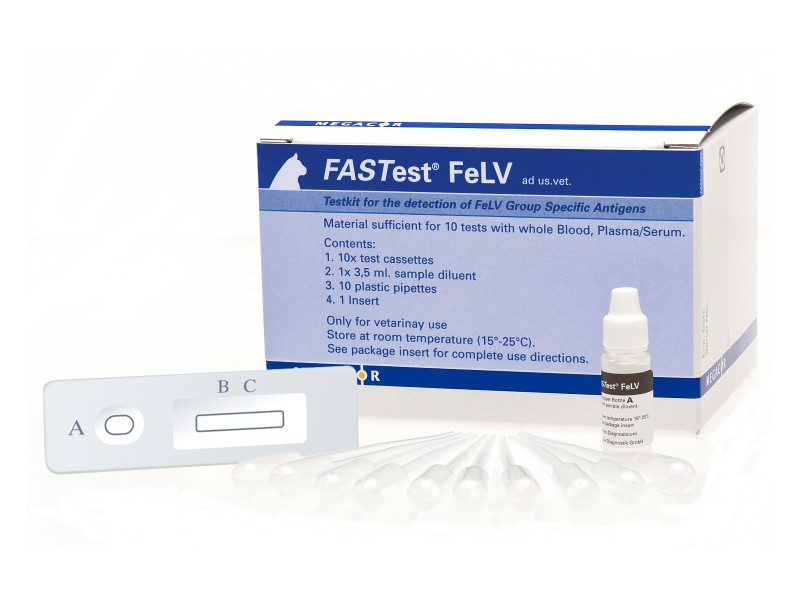Description
Qualitative Detection Of Feline Leukaemia Virus
Test applicable to: Cat
Sample: Whole Blood, Serum and Plasma
FASTest FeLV is based on a rapid immunochromatographic technique. Extracellular FeLV-Antigens in the sample will form specific antigen-antibody complexes in the sample area. Lateral flow (migration) towards the FeLV areas (marked ‘T’ on the slide) allows these complexes to bind with gold particles labelled with monoclonal FeLV antibodies to form a pink-purple Test line. A correct test procedure will be indicated by a second pink-purple line in the Control area (marked ‘C’ on the slide).
FASTest FeLV Product Information – PDF Download
Why use FASTest? Here are 10 great reasons why – and ask us about our Charity Rates!
Why Use FASTest FeLV-FIV Test Kits
FeLV-FIV Re-Test Form 2020
FeLV – FIV Combination Test also available follow this link
FIV Single Test also available follow this link
Why Test?
Why is it important to test for FeLV?
Feline Leukaemia Virus (FeLV) is found worldwide in cats. Depending on their age, health, environment, and lifestyle the prevalence of infection can vary greatly. FeLV-Antigen detection is accepted as the method of first choice for the diagnosis of infection. FeLV infected viraemic cats normally show high concentrations of extracellular (free) FeLV-Antigen in their blood 3 weeks post-infection. Based on highly specific monoclonal FeLV-Antibodies FASTest FeLV is an important diagnostic tool for the detection of infected cats.
Symptoms
What are the symptoms of FeLV?
Clinical signs are progressive deterioration of the cat’s health which can be interspersed with periods of relatively good health. In the early stages of the FeLV infection, it is not unusual for cats to show no signs of the disease at all. Some signs may appear after months or even years after the infection.
- Poor coat condition
- Loss of appetite
- Enlarged lymph nodes
- Mucus membranes
- Pale gums
- Gingivitis (inflammation of the gums)
- Stomatitis (inflammation of the mouth)
- Skin infections
- Bladder infections
- Infections of the upper respiratory tract
- Persistent fever
- Persistent diarrhoea
- Eye conditions
- Weight loss (slow but progressive)
- Various types of cancer
- Neurological disorders
- Behaviour changes
- Reproductive failures in unsprayed female cats
Instructions For Use and Hartmann Report
Instructions For Use
FASTest FeLV Instructions For Use
Hartmann Report – Quality of different in-clinic test systems
Hartmann Report


